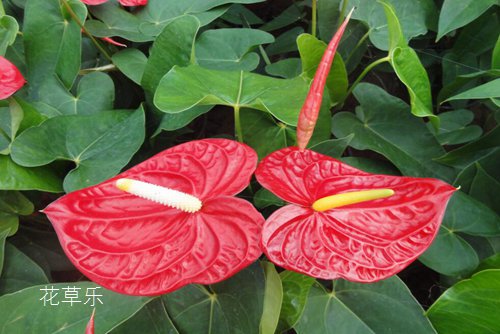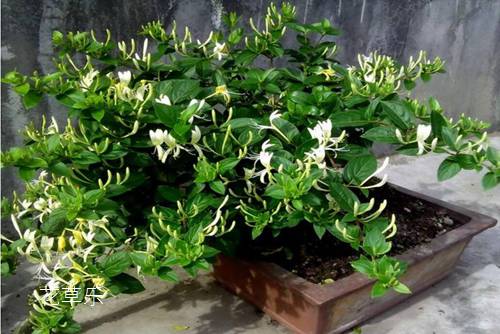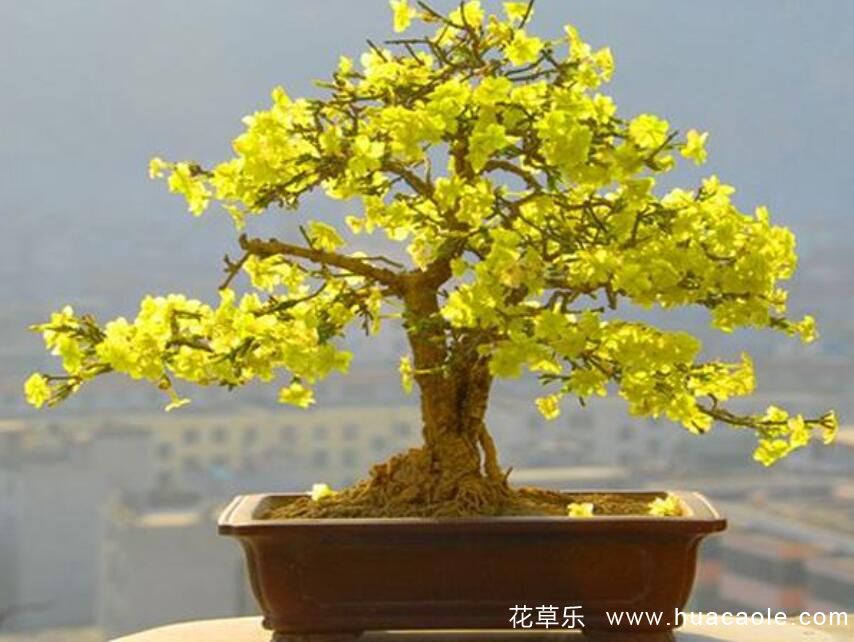Anthurium cultivation method: teach you how to raise Anthurium andraeanum
Anthurium andraeanum is native to the rainforests of South America. Anthurium andraeanum because of its unique flowers, for the Buddha's bud, bright and gorgeous color, rich colors, but also the role of purifying indoor air, sexual preference for warm, humid and semi-shady environment, but not resistant to shade, like the sun and avoid direct sunlight, not cold-resistant, like fertilizer and avoid salt and alkali. How to raise Anthurium andraeanum? what are the breeding methods and points for attention of Anthurium andraeanum? What diseases and insect pests will occur in the process of breeding and how to prevent them? The following is an analysis of Hua Cao Le and you one by one.
Anthurium cultivation method: teach you how to raise Anthurium andraeanum

First, is it better to raise soil or water?
The most commonly used is soil farming, but water farming is clean and hygienic, has higher appreciation, and is very popular with enthusiasts, and water farming is becoming more and more common. When Anthurium andraeanum is hydroponically cultured, the speed of inducing new roots takes longer than that of the Silver Queen and other plants, but its root system has a strong life, so it is very easy to maintain when it forms a hydroponic root, so we should choose a strong virus-free Anthurium andraeanum plant. After disinfecting with agricultural streptomycin, it can be domesticated with flower nutrient solution. Anthurium andraeanum grows circularly according to the law of "leaf → flower → leaf → flower". Inflorescence is formed in the leaf axil of each leaf, which makes the flower and leaf yield the same.
II. Soil and temperature
Red palm sex likes warm, moist and semi-shady environment, but does not bear shade, likes sunshine but avoids direct sunlight, is not resistant to cold, likes fat and avoids salt and alkali. Potted red palm should choose the matrix with good drainage, and the composite substrate of peat, perlite and sand for large-scale production, the ratio is 1 cubic meter of peat: 4 to 5 kilograms of perlite: 0.15 cubic meter of sand. The pH value is kept between 5.5 and 6.5. The optimum growth temperature is 20-30 ℃, the highest temperature should not exceed 35 ℃, and the lowest temperature is 14 ℃. Freezing injury may occur at any time when the temperature is lower than 10 ℃. The optimum air relative humidity is 70% Mel 80%, which should not be less than 50%, because keeping a high air humidity in the cultivation environment is the key to the success of Anthurium andraeanum cultivation. Therefore, foliar spraying should be carried out many times throughout the year. Anthurium andraeanum is not tolerant to strong light and should be cultivated in a shady environment throughout the year, that is, it should be cultivated in a greenhouse with protective facilities. It should be properly shaded in spring, summer and autumn, especially 70% shading in summer. Direct sunlight will make the leaf temperature higher than the air temperature, and if the leaf temperature is too high, there will be burns, scorched leaves, bud discoloration and slow leaf growth.
Third, lighting and watering
If the light is too large and too little, the assimilate produced by the plant is very little, but if the light is too strong, it may cause discoloration, burn or scorch of the leaves. Therefore, the success of light management is directly related to the quality of potted flowers and the number of flowers. According to the characteristics of Anthurium andraeanum like Yin, it is appropriate to put it in a bright place where there is a certain degree of scattered light indoors, and never put it in an environment with strong direct sunlight. Water and fertilizer management should be appropriate Anthurium andraeanum belongs to salt-sensitive flowers, the less salt in water, the better, it is best to use tap water. Fertilization is often combined with watering, and a compound fertilizer with a ratio of nitrogen, phosphorus and potassium of 1 ‰ at 1:1:1 is generally selected. In spring and autumn, fertilizer and water are generally watered every 3 days. If the temperature is high, the substrate in the basin can be watered every 2-3 days; in summer, it can be watered every 2 days; when the temperature is high, it can be watered once more; in winter, it can be watered every 5-7 days. Can also directly use Anthurium andraeanum special fertilizer. A loose substrate that can both gas and moisturize is a good basis for root growth, so when changing pots or ramets, several substrates should be mixed according to local conditions, such as peat soil, coconut bran and perlite at 3:2:1.
Time: 2019-04-29 Click:
- Prev

How to raise bonsai of honeysuckle? Honeysuckle can branch short flowers and multiply.
Honeysuckle, also known as honeysuckle. Also known as gold and silver vines and mandarin duck vines. Honeysuckle, blooming in March, five out, slightly fragrant, stem with red, flowers at the beginning of the color is white, after one or two days, the color is yellow, hence the name honeysuckle. Honeysuckle has been known as a good medicine for heat-clearing and detoxification since ancient times. It is sweet and cold and fragrant, sweet and cold, clearing heat without harming the stomach
- Next

When do primroses bloom? introduction to the maintenance of primrose bonsai
Primrose and plum blossoms, daffodils and camellias are collectively known as the four friends in the snow, which is one of the common flowers in China. Primrose is not only dignified and beautiful, extraordinary temperament, with no fear of cold, no choice of style, strong adaptability, has always been loved by people. The following flowers and grass music will share with you when the spring primrose will bloom.
Related
- Fuxing push coffee new agricultural production and marketing class: lack of small-scale processing plants
- Jujube rice field leisure farm deep ploughing Yilan for five years to create a space for organic food and play
- Nongyu Farm-A trial of organic papaya for brave women with advanced technology
- Four points for attention in the prevention and control of diseases and insect pests of edible fungi
- How to add nutrient solution to Edible Fungi
- Is there any good way to control edible fungus mites?
- Open Inoculation Technology of Edible Fungi
- Is there any clever way to use fertilizer for edible fungus in winter?
- What agents are used to kill the pathogens of edible fungi in the mushroom shed?
- Rapid drying of Edible Fungi

